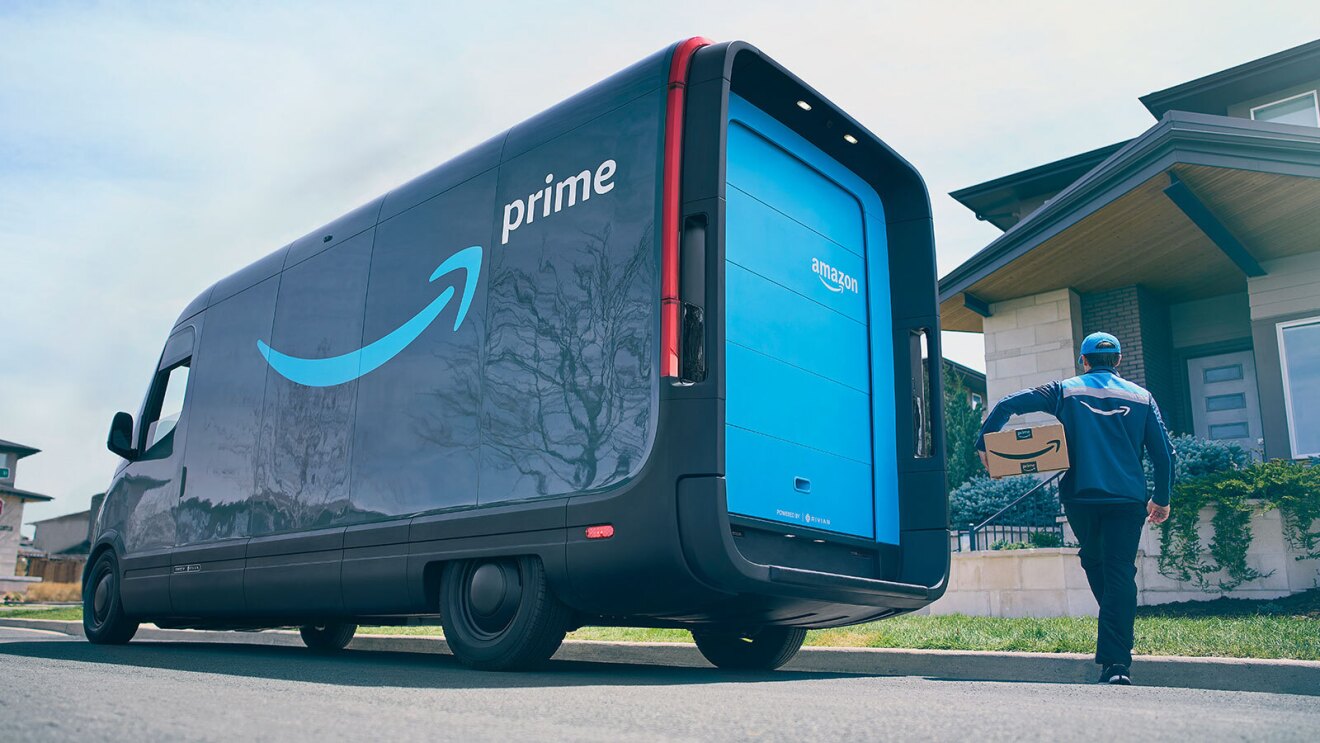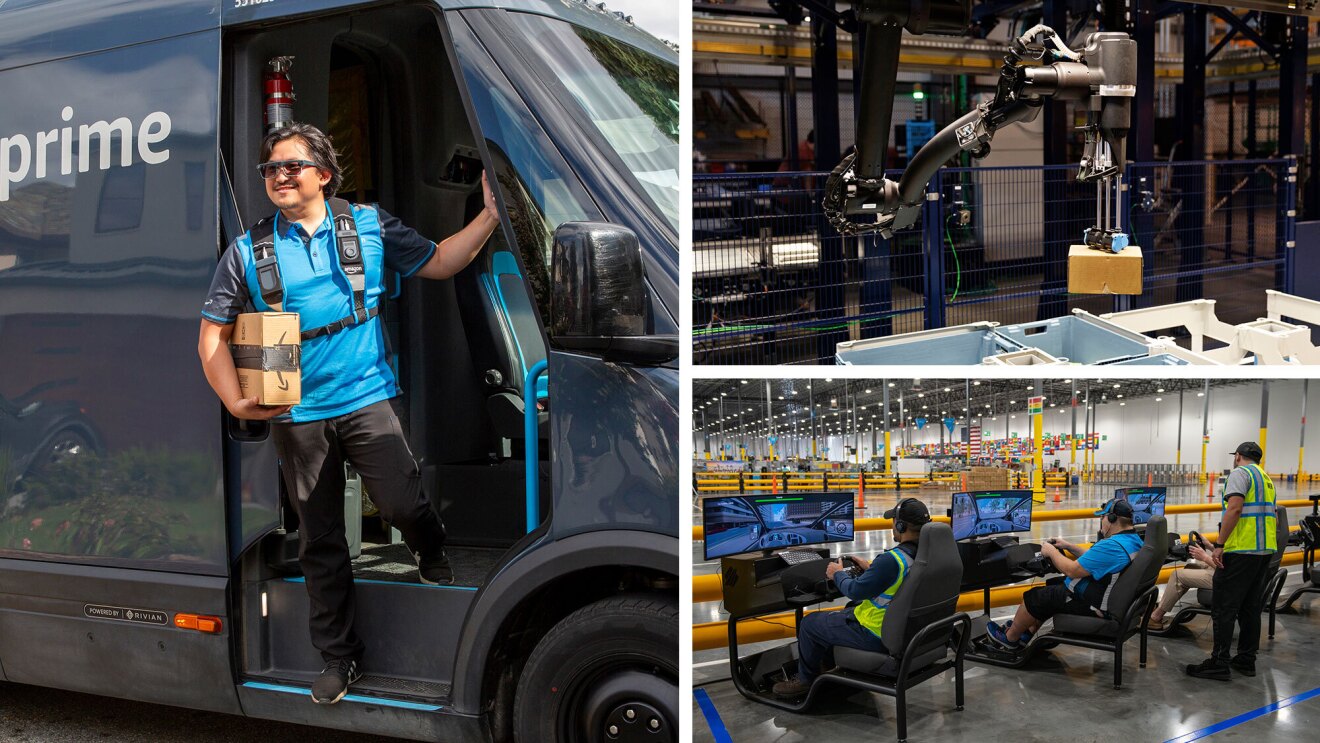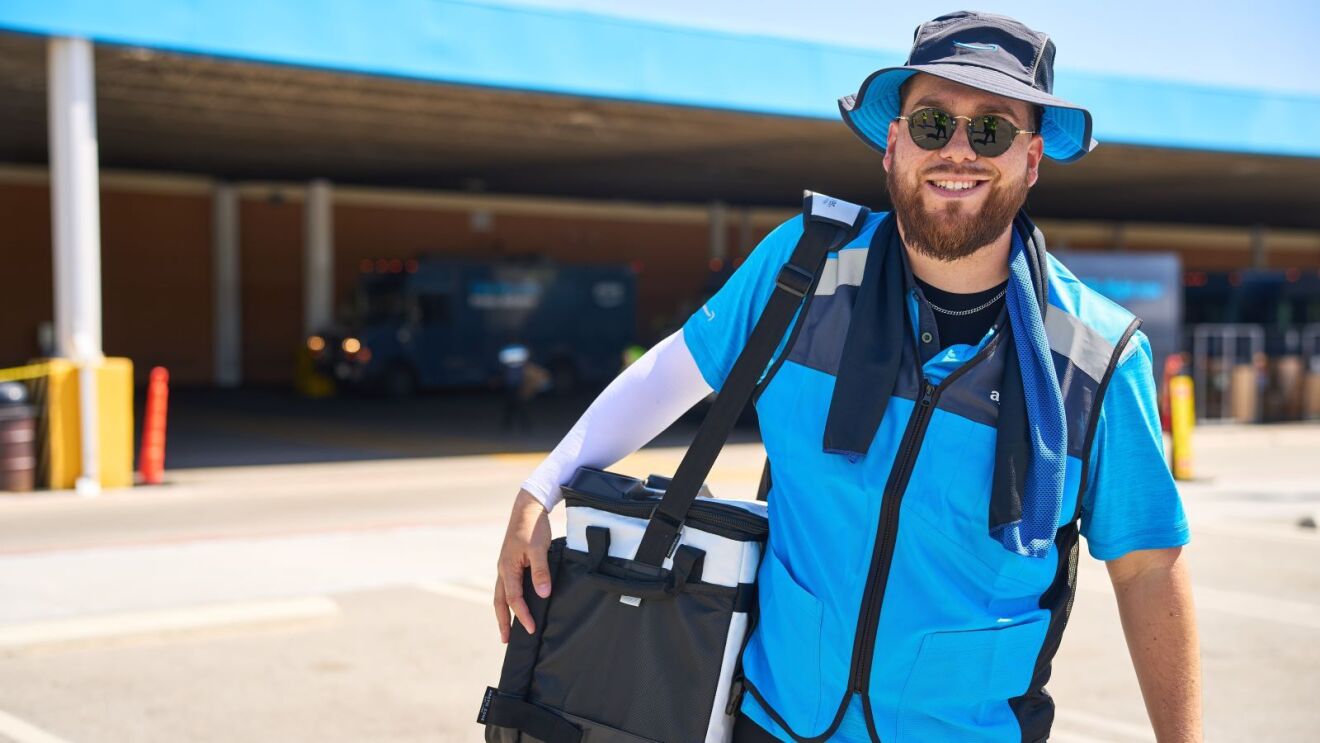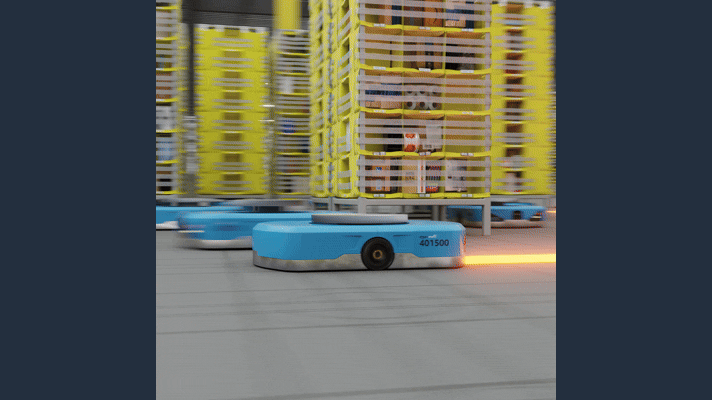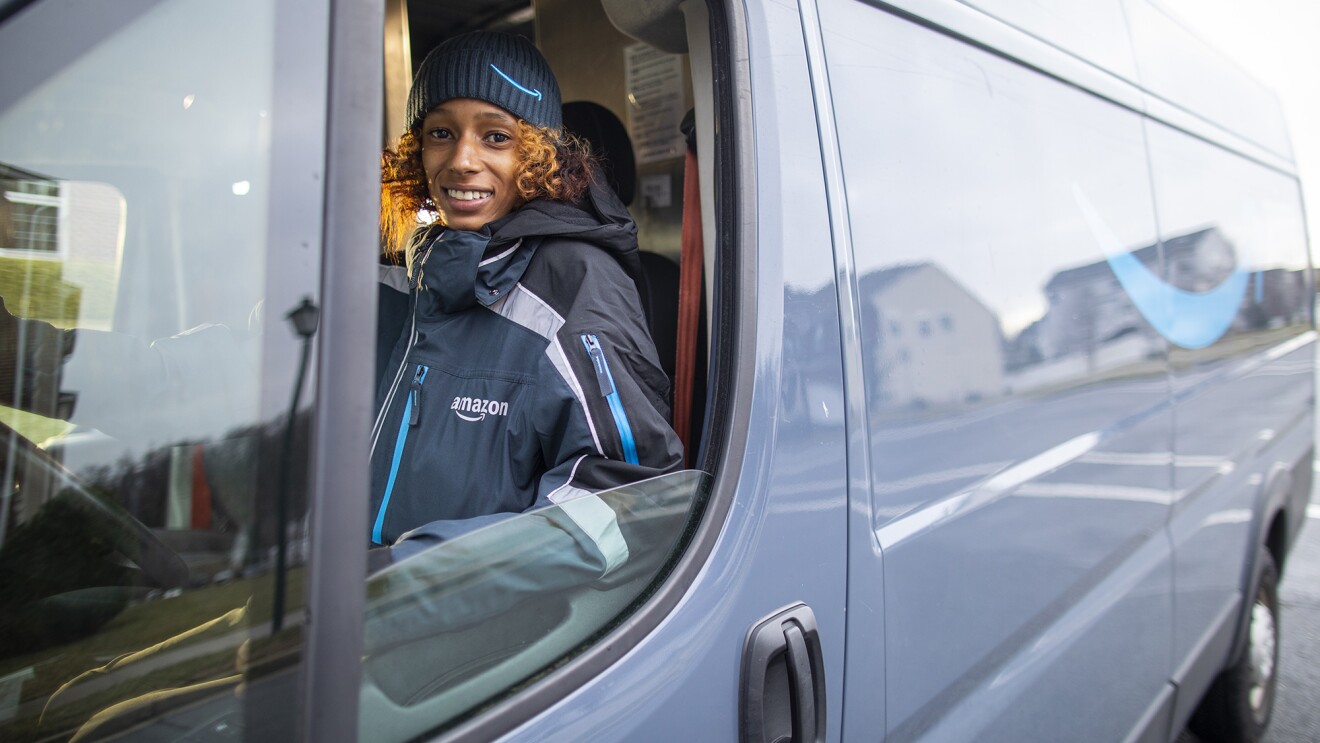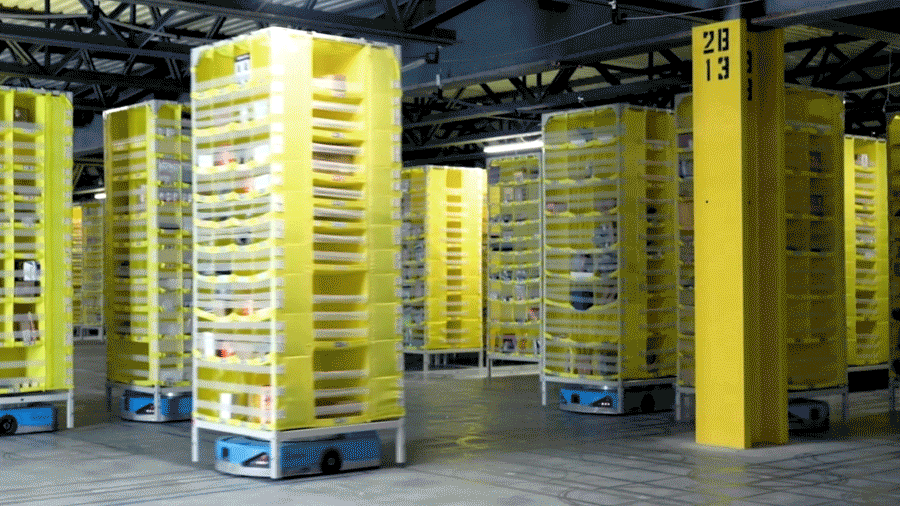

Page overview
Hercules can lift up to 1,250 pounds and travel across the 1 million square feet of our largest fulfillment centers.
Hercules travels back and forth in our fulfillment centers to pick up mobile shelves of products and deliver them to employees at ergonomic workstations. Amazon stores goods on four-sided shelves called pods, which contain inventory ready for customers. When a customer order is made, Hercules slides under the appropriate pod, lifts it off the ground, and drives the pod to an employee, who picks the item and sends it off for packing.
Hercules makes key decisions about how it moves independently, but takes overall direction from centralized planning software. After an order arrives at a specific fulfillment center, the software begins to orchestrate the safe, efficient movement of robot drives to help meet the delivery date. Amazon has over 750,000 mobile robots across its network. At each site, thousands of Hercules drives are coordinating how they move as a connected fleet.
Hercules has a forward-facing 3D camera that identifies people, pods, other robots, and any other items in the way. It uses these images to make safe decisions quickly, and is also programmed to respond safely if the electricity goes out. Hercules uses its camera to read a grid of encoded markers on the floor, which enables it to navigate, find its position, and locate any pod.
Hercules not only communicates with other robots, but also humans. Hercules can identify the location of humans who wear Wi-Fi transmitters called Tech Vests, and robots beyond the range of its sensors, so it can plan a route that steers clear of them.
- Amazon introduces Sparrow—a state-of-the-art robot that handles millions of diverse products
- 10 years of Amazon robotics: how robots help sort packages, move product, and improve safety
- I’m a 22-year-old operations manager at an Amazon fulfillment center. Robots make my job safer and open doors to new opportunities.
Trending news and stories




